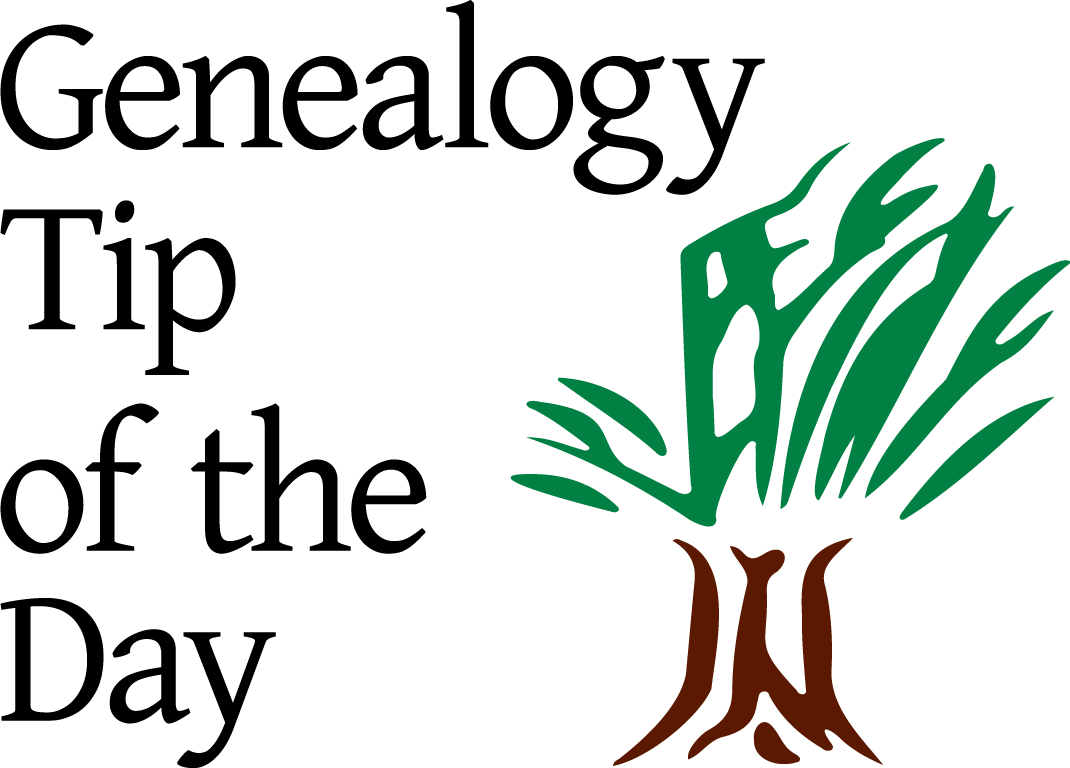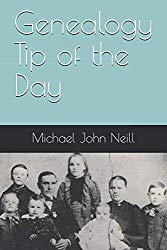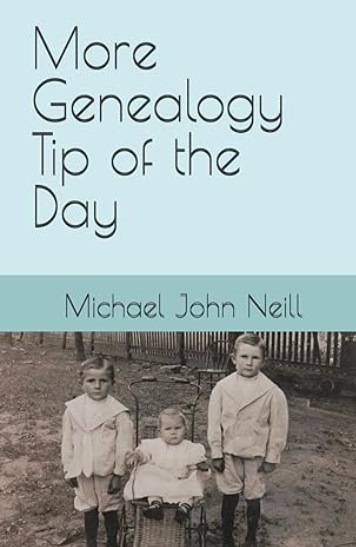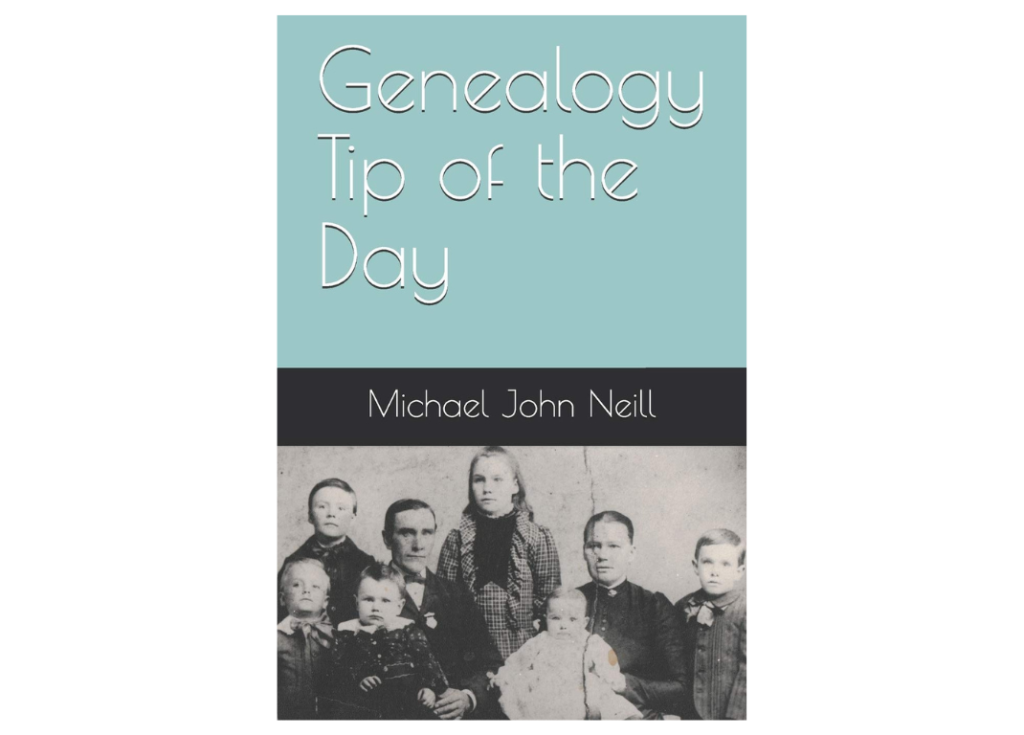If your relatives were farmers who owned their own land, do you know how the sections within a township are numbered? Knowing where your relative’s property fits in relationship to others can help you know how close they really live. Not all bordering sections have adjacent numbers. The GLO Primer will give you a broad overview.
When was the last time you took a good look at research you did in the “early days” of your research? There may be statements that you never found any source for, conclusions that no longer stand up to analysis, confusing concepts that you know understand, or leads that you realize you never worked up. In short…there could be a lot of new work sitting in that “old work.”
If you’ve been experimenting with a database search in order to finally locate that elusive ancestor, have you made certain that there is not something from a previous search hiding in a box? If there is an option to clear out previous searches, that’s often a good idea if you’ve been looking for multiple people in multiple ways in the same database.
If you are looking for things to “jog memories” of either yourself or relatives, think about how really cold or really warm temperatures were dealt with “back in the day.” Thinking about how you kept warm could get a whole flood of memories started. Speaking of floods, if your family survived one of those that is something to ask about as well.
Did you know the 1880 census asks if the person was married within the census year? A list of US census questions is on the census.gov website.
A reminder about relationships: If A and B are both related to C, that does not mean that A and B are necessarily related to each other. A and B could be related, but they do not have to be related to each other simply because they share C as a relative. My Mom and my Dad were both related to a person named Mary Anne. My Mom and Dad were not related to each other at all. Mom was related to Mary Anne’s dad and my Dad was related to Mary Anne’s mother. Always stop and think about what relationships are implied by relationships and which relationships are not. And remember–sometimes our own family makes good examples and sometimes they do not.
The checks don’t indicate what they were for, but a little work made it clear that they were written to pay for my father’s birth. My Dad was born on 14 April 1941 and the first check (22 April 1941) was written to the St. Joseph’s Hospital where he was born. The check from 15 April was written out to Dr. C. A. Runyon–the doctor who delivered my Dad according to his birth certificate. Less direct evidence was the fact that these two checks were tucked into an envelope that was in an album of childhood pictures and other items from my father’s childhood and high school years. It seems reasonable that someone (likely my grandmother) put the checks in dad’s album because they were written when he […]
“Well-known Carthage nimrods” went hunting in the early 1940s. One might be tempted to think the newspaper was making a snide reference. It was not. “Nimrod” is not just a reference to someone who is dim-witted. It can also mean someone who is a good hunter. Never assume a word means something when you are uncertain of its definition. If what you think a word means seems inconsistent with the way it is used, look it up. Nimrod has two current meanings still in use. Other words may have had meanings 100 years ago that they no longer have. Make certain. Do not assume. Assumptions are a great way to create additional brick walls in your genealogy research.
While DNA passes from parent to child, each child only gets half of each of their individual parent’s DNA. Consequently, as a lineage is worked back in time, there will be ancestors in your genealogical tree with whom you might not share any DNA. It doesn’t mean that the ancestor is not your ancestor. It simply means that their DNA did not makes it’s way all the way down to you. While DNA is microscopically small, there’s only so much your body needs. Some suggest (for example, Blaine Bettinger in his The Family Tree Guide to DNA Testing and Genetic Genealogy) that once a lineage is traced back to the 4th great-grandparents that there are paper genealogy tree ancestors with whom you do not share DNA. That’s why you […]
From a while back… If a veteran or his widow received a land warrant for service in the War of 1812, they had one of two choices: haul their happy self to territory that had unclaimed federal land sell the warrant and assign it to someone who did want to haul their happy self to territory that had unclaimed federal land Then whoever had the warrant would claim the appropriate amount of acreage in the federal domain and surrender the warrant in exchange for title to the property. The warrant was what was used for payment or consideration. After the paperwork was completed, the individual who surrendered the warrant would receive a “first deed” (patent) giving them title to the real estate they had claimed. The application to get […]
In March of 1831, the real estate of Thomas Sledd in Nicholas County, Kentucky, was partitioned out among his wife and five children. Sledd had actually died in 1815 and his estate was settled at that time in Bourbon County. Why the delay and why the change of location? It may be tempting to dream up some crazy soap opera scenario but the reality is likely buried in mundane details. It is known that after Thomas’ death and estate settlement, the county line between Bourbon and Nicholas County was changed from a straight line to one that, for the most part, followed a creek. The line change made Sledd’s farm in Nicholas County. The reason for the delay until 1831 is speculative, but it is known that Thomas […]
When utilizing gravestone photographs on FindAGrave, look at the largest version of the image you can and see if there are surrounding tombstones pictured. Some submitters crop the images closely, but others do not. There were clues of other family burials in the background of thepicture of a tombstone from Clinton County, New York for Louis Demar and his apparent mother.
I hate to call them “variant” spellings because that suggests the family actually used the spelling at one point or another. Sometimes errors are simply errors. And there can always be one more incorrect rendering of a last name no matter how many other spellings have been located. For me the actual last name was Tammen and the “new” variant was Tanney. It’s from a transcription and little thought is needed to see how two “m”s can be read as two “n”s. The “n” as a “y” is a little more suspect, but without seeing the original handwriting it’s hard to say how reasonable the interpretation was. Getting the original document is on my to-do list. Just a reminder to keep your mind open to other renderings when […]
It can be tempting for genealogists to assume that the structure of things today are the way they have been for longer than they may have. Two of my grandparents graduated from the same high school I did. It was after I had been researching my genealogy for some time when I discovered that they didn’t attend all their high school years at that same school. They both attended the first three years of high school at high schools very near to where they lived, but ones that only offered the first three years of high school. They both chose to attend the county seat high school for their fourth year. I had just assumed they went there all four years like I did. It’s not just high […]
Old newspapers and obituaries often contain the abbreviation viz. Some genealogists wonder exactly what viz means, so in this tip we will look at three abbreviations that often are confused. e.g. from exempli gratia – “for example” (common usage is that what follows e.g. is an example and not a complete list of items) i.e. from id est – “that is” or “in other words” (common usage is that what follows is a restatement of something previously stated) viz. from videlicet – “it may be seen” (common usage is that what follows is a complete list) A little story serves to illustrate. The reality: James Jones was born in Harford County, Maryland and his wife was born in Smith County, Ohio. They were married in Smith County, Ohio, in 1830. James and Elizabeth (Smith) Jones had children named Riley, […]








Recent Comments